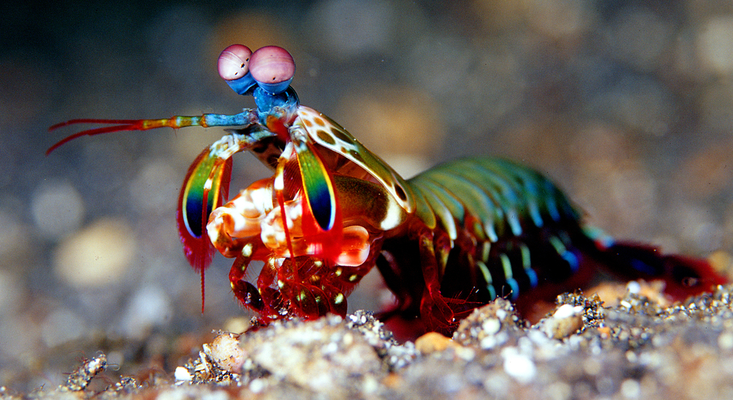From Nautil.us, January 19:
The Wild World of Threats
Animals, including us, evolved to bluster and bluff at their peril.
You’re confronting a spider, up close, womano-a-womano. The tiny creature rears back on its hindmost legs and assumes a threatening posture, ridiculous given that you could easily squash it with your shoe. Yet everyone understands the gesture, even though to locate the most recent common ancestor shared by the two of you, you’d have to go back roughly half a billion years. The basic language of threat is nearly as old as that other basic language, DNA. Threats between living things have long been grist for the evolutionary mill. And human beings aren’t immune.
As I write this, Russia’s Vladimir Putin is threatening to invade Ukraine. He sees Ukraine as a threat to his power and country were it to join NATO. Ukraine, NATO, and the United States are responding with counterthreats. For all we know, the threats are real; certainly, none is ridiculous. The consequences are immense, with war in the balance.
A threat, as I consider it here, involves an effort at deterrence, communicating that if someone does something that the threatener seeks to prevent, the consequences—typically some form of retaliation—will be sufficiently aversive to prevent the potential perpetrator from perpetrating in the first place. Living things are typically equipped with a range of intimidating options, not just baring teeth and claws, but also displaying horns, antlers, poison fangs, bony shields, uttering scary hisses and formidable roars, puffing body up, flattening ears down, rattling, hissing, spitting, screaming, flapping wings, staring unwaveringly, even sometimes becoming weirdly quiet.

Things get interesting when threat-purveyors exaggerate their capabilities, leading recipients, on occasion, to call their bluff, which in turn results in the threatener trying to maintain credibility while the target seeks to determine whether the threat is genuine. Most people wouldn’t take a spider’s threat seriously, but it’s a different story for another spider, or a would-be spider predator, who might well be uncertain what to do next. Believe the threat or see through it?
When threatening another animal, standard procedure is for threateners to make themselves seem larger, more dangerous, imposing, stronger, healthier, more experienced, and more motivated than they really are, all in the service of avoiding actual combat while preventing an opponent from taking their food, nest site, mate, or, quite simply from attacking. For the threat to work, the threatener must signal that it has weapons and is willing to use them. Even if neither is true. Talk is cheap, certainly cheaper than fighting, so getting your way via a threat is often a good deal.
It’s fine to speak softly and carry a big stick, but if your stick is small, why not speak loudly anyhow, and hope that will work? Animals no less than people often do just that, bluffing and blustering and threatening to blow the other guy’s house down. One might expect no limit to the aggressive braggadocio out there in the natural world; the payoff to exaggerated threat-making can be great, while the costs appear small.
which may have been unfair to scorpions.
But the costs could be high—notably if your bluff is called. When a threat is “honest,” that is, backed up with inclination and ability to meet a push with a shove, there is little payoff to calling a threatener’s bluff. But the more widespread and the more “dishonest” the bluffing, the greater the temptation to question its legitimacy. Honesty, we like to think, is the best policy. Natural born liars, in the biological world, must confront a practical problem that is often shared with their human counterparts: Deceivers run the risk of being tripped up in their dishonesty, especially if their bluff is called. The key is credibility, or rather, the problem of achieving it.
Animals with effective weapons that can intimidate their rivals are not shy about calling attention to their armament, which often carry what biologists call a “reliability component”—characteristics that are impossible to fake—baked into the structure of the weapons themselves. Their threats are likely to be credible and effective....
.... MUCH MORE